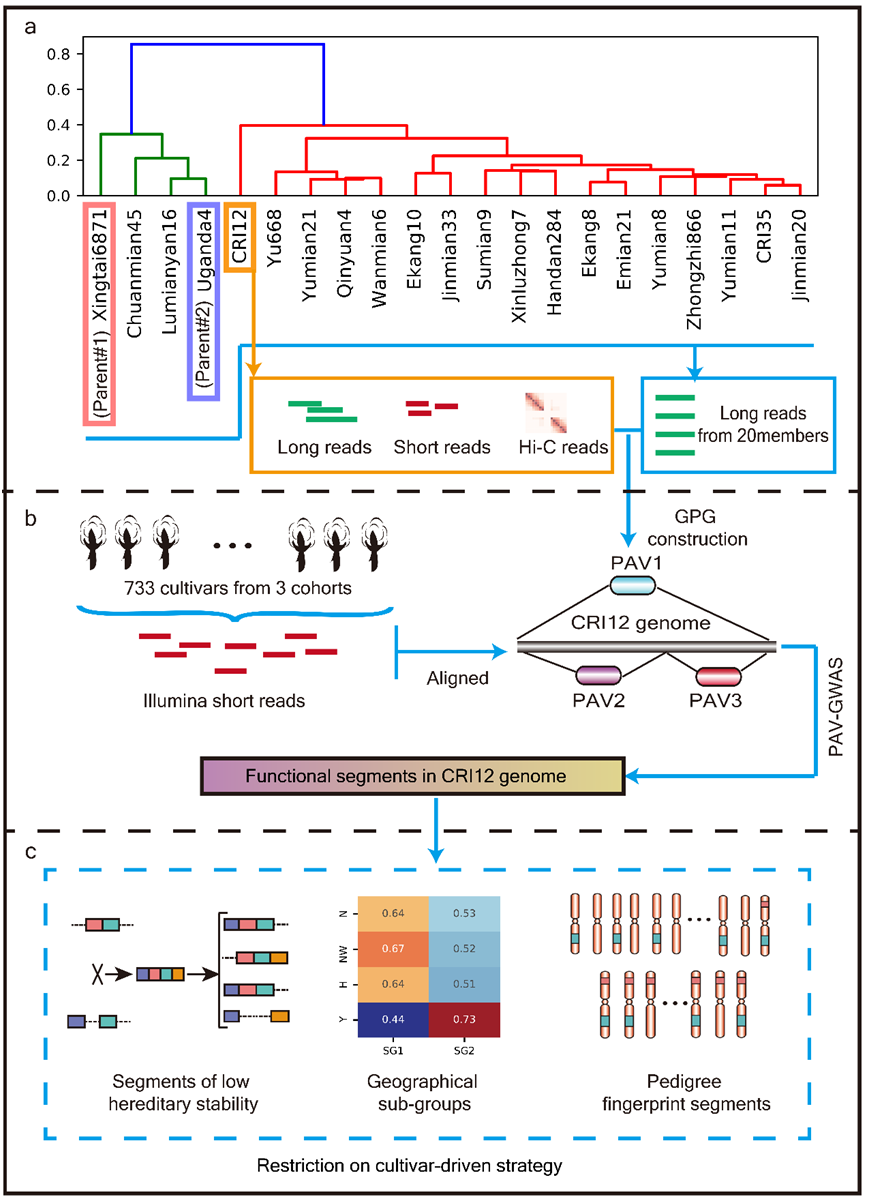- Location : Home» Newsroom
From cultivar-driven breeding to gene-driven breeding
Recently, Guoli Song's group from the Chinese Agricultural Academic Science, Cotton Research Institute (CAAS, CRI) has constructed a high-quality pedigree genome of CRI12 and revealed genetic basis cultivar-driven strategy's restriction, providing theoretical support for the strategy transition from cultivar-driven to gene-driven. The research was published in Genome Biology, entitled “Cotton pedigree genome reveals restriction of cultivar-driven strategy in cotton breeding."
The primary cotton breeding strategy in fieldwork is cultivar-driven, selecting an elite cultivar as the backbone parent to create new elite accessions. CRI12, as a cultivar, won the first prize in the National Award for Technological Invention of China and has generated its pedigree. Thus, a detailed characterization of the CRI12 pedigree's genomic landscape could reveal the genetic basis of the cultivar-driven strategy and provide insights into cotton molecular breeding.
This research has assembled the high-quality genome and CRI12 and constructed CRI12’s graphical pedigree genome based on genomic variations within the pedigree. Genomic analysis showed that low hereditary stability of the elite genomic segments, geographical bias of functional segments, and pedigree fingerprint segments restrict the utility of the backbone cultivar's genomic resource. This result reveals the restrictions of the cultivar-driven strategy, indicating that the strategy transition from cultivar-driven to gene-driven is necessary for cotton breeding in the future.
The National Key Research and Development Program of China, The Project of Sanya Yazhou Bay Science and Technology City, the National Natural Science Foundation of China, the Central Public-interest Scientific Institution Basal Research Fund, and the Agricultural Science and Technology Innovation Program of the Chinese Academy of Agricultural Sciences support this research.
The original research is available at:https://doi.org/10.1186/s13059-023-03124-3
